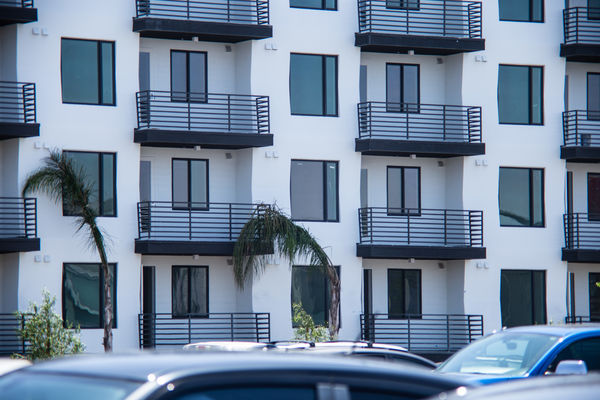Angle of View effect when using lens adapters.
Aug 16, 2018 13:27:19 #
First of all, let me apologize for what I know must be an already answered question ad-infinitum. Having said that, I must confess my relative unease effecting searches. Here is the thing, irrespective of any crop factor, I believe that the use of lens adapters must impose a change on the angle of view of a given photograph. After all, extenders and multipliers do change the angle of view. If I am correct in my thinking, why is it that I can not find a satisfactory answer to my question? What is the change in angle of view when using a lens adapter?
Aug 16, 2018 13:31:03 #
If the adapter is not a booster type and the camera bodies have the same size sensor (for example adapting a Leica M lens to a Sony A7) then there is no change in angle of view.
Aug 16, 2018 13:43:39 #
Assuming that the lens adapter is not a booster type, What is a booster type lens adapter?  ) my question refers to the actual change in angle of view. For example, a 1.4 extender will add that quantity to the angle of view of a 50mm lens and render it with an angle of view at 77mm, right? I can sink my teeth on that. But what about a lens adapter?
) my question refers to the actual change in angle of view. For example, a 1.4 extender will add that quantity to the angle of view of a 50mm lens and render it with an angle of view at 77mm, right? I can sink my teeth on that. But what about a lens adapter?
 ) my question refers to the actual change in angle of view. For example, a 1.4 extender will add that quantity to the angle of view of a 50mm lens and render it with an angle of view at 77mm, right? I can sink my teeth on that. But what about a lens adapter?
) my question refers to the actual change in angle of view. For example, a 1.4 extender will add that quantity to the angle of view of a 50mm lens and render it with an angle of view at 77mm, right? I can sink my teeth on that. But what about a lens adapter?BebuLamar wrote:
If the adapter is not a booster type and the camera bodies have the same size sensor (for example adapting a Leica M lens to a Sony A7) then there is no change in angle of view.
Aug 16, 2018 13:50:09 #
juanbalv wrote:
Assuming that the lens adapter is not a booster type, What is a booster type lens adapter?  ) my question refers to the actual change in angle of view. For example, a 1.4 extender will add that quantity to the angle of view of a 50mm lens and render it with an angle of view at 77mm, right? I can sink my teeth on that. But what about a lens adapter?
) my question refers to the actual change in angle of view. For example, a 1.4 extender will add that quantity to the angle of view of a 50mm lens and render it with an angle of view at 77mm, right? I can sink my teeth on that. But what about a lens adapter?
 ) my question refers to the actual change in angle of view. For example, a 1.4 extender will add that quantity to the angle of view of a 50mm lens and render it with an angle of view at 77mm, right? I can sink my teeth on that. But what about a lens adapter?
) my question refers to the actual change in angle of view. For example, a 1.4 extender will add that quantity to the angle of view of a 50mm lens and render it with an angle of view at 77mm, right? I can sink my teeth on that. But what about a lens adapter?Normally the lens mount adapter doesn't change anything so the angle of view doesn't change. Of course if you mount the lens on a body with different size sensor then the angle of view would change. The speed booster is kind of the reverse of the extender. It reduces the image circle so that when mounting a lens on a body with smaller sensor the crop factor is less and the lens speed increase.
But a simple answer to your question the adapter doesn't change the angle of view.
Aug 16, 2018 13:51:36 #
I see that speed booster is a "reference" to Metabones lens adapters that include optics for the purpose of reducing focal length: https://en.wikipedia.org/wiki/Lens_adapter. This then is a way of avoiding the effect of angle of view change, albeit, perhaps, with some IQ degradation? Am I to assume that any lens adapter with optics included, such as some Fotodiox, would provide the same utility? Or is this attributable to Metabones only?
Aug 16, 2018 13:53:13 #
juanbalv wrote:
Assuming that the lens adapter is not a booster type, What is a booster type lens adapter?  ) my question refers to the actual change in angle of view. For example, a 1.4 extender will add that quantity to the angle of view of a 50mm lens and render it with an angle of view at 77mm, right? I can sink my teeth on that. But what about a lens adapter?
) my question refers to the actual change in angle of view. For example, a 1.4 extender will add that quantity to the angle of view of a 50mm lens and render it with an angle of view at 77mm, right? I can sink my teeth on that. But what about a lens adapter?
 ) my question refers to the actual change in angle of view. For example, a 1.4 extender will add that quantity to the angle of view of a 50mm lens and render it with an angle of view at 77mm, right? I can sink my teeth on that. But what about a lens adapter?
) my question refers to the actual change in angle of view. For example, a 1.4 extender will add that quantity to the angle of view of a 50mm lens and render it with an angle of view at 77mm, right? I can sink my teeth on that. But what about a lens adapter?You seem to have multiple topics mixed together. No wonder you can't find a clear explanation.
First, off, the arithmetic of an extender / teleconverter is the factor (say 1.4x) against the focal length of the lens. In your example, that is 1.4 * 50 = 70. Not sure where you ended up with 77. This is hypothetical, as I'm not sure if a 3rd party tool could extend an 50mm lens. Nikon and Canon would not. An extender / teleconverter is not an adapter.
Next, you keep saying 'adapter' so we can only assume you mean 'adapter' as in a product that allows a lens of one mount type (say Canon FD) to a camera body that uses another mount type (say a Sony E). Each of the many many unique combinations would then need to be investigated for the specifics of the lens / mount-type and the specifics of the camera / sensor. In the example of a 'full frame' Canon FD lens and a 'full frame' Sony sensor, the angle of view is unchanged by the adapter. But, other adapters may include a crop factor. There's no universal generalization that can be made.
If you have a specific question about a specific lens, and body, and adapter combination, try asking that specific question to the internet, here or google.
Aug 16, 2018 13:53:36 #
Putting a lens adaptor (using a film camera lens on a digital camera) between the lens and camera body would seem to make a change. However, whatever change there may be is not noticeable.
Aug 16, 2018 14:05:48 #
Thank you CHG_CANON, the 77mm result was a typo. My idea is that the hypothetical extension will change the angle of view to 70mm. Physically the 50mm lens remains a 50mm lens, remains a... I do keep mentioning adapter because that is my main interest to understand the arithmetic of lens adapters. For my purposes, I am interested in using FD, M42, and K mount lenses with my Canon DSLR's. I use an EOS 6D as well as a 60D. Your last statement that there is no universal generalizations that can be made, is somewhat problematic as manufacturers of lens adapters do not provide such information. Thank you indeed for your input, I really do appreciate it.
CHG_CANON wrote:
You seem to have multiple topics mixed together. N... (show quote)
Aug 16, 2018 14:06:54 #
Thank you Vietnam Vet from another Vietnam Vet.
Vietnam Vet wrote:
Putting a lens adaptor (using a film camera lens on a digital camera) between the lens and camera body would seem to make a change. However, whatever change there may be is not noticeable.
Aug 16, 2018 14:08:17 #
BebuLamar wrote:
Normally the lens mount adapter doesn't change anything so the angle of view doesn't change. Of course if you mount the lens on a body with different size sensor then the angle of view would change. The speed booster is kind of the reverse of the extender. It reduces the image circle so that when mounting a lens on a body with smaller sensor the crop factor is less and the lens speed increase.
But a simple answer to your question the adapter doesn't change the angle of view.
But a simple answer to your question the adapter doesn't change the angle of view.

Aug 16, 2018 14:23:51 #
The issue with FD lenses is the "42mm flange focal distance of the FD mount is shorter than that of most other lens mounts" (from wiki). For an adapter needed for an FD lens, the first issue the adapter must address is moving the back of the lens close enough to the sensor (or further away) that the lens will focus, and preferably, retain the ability to focus to infinity. The EF lens mount for EOS bodies has a 44 mm flange focal distance. That's a problem as you cannot mount the FD lens inside the EOS body to shorten the distance to 42mm. There has to be room inside the EOS fullframe body for the mirror to move. So, optics are involved, at least for FD to EOS, that perform similar to your question about extenders, at a factor of 1.26x. If the EOS body contains a cropped sensor, then too you have to consider that crop factor, 1.6 for a Canon DSLR.
The Sony E-mount has a flange distance of 18mm and a 1.5× crop factor with APS-C sensor cameras and a 1× crop factor with full frame sensor cameras. The metabones adapter for FD to E is simply a metal donut that holds (adapts) the FD lens to the necessary 42mm distance from the camera sensor allowing focus to infinity as well as close focusing. See topic "Using FD lenses on other mounts" within https://en.wikipedia.org/wiki/Canon_FD_lens_mount.
For the other lens mounts you mentioned, you'd then have to investigate their specific flange distances vs the candidate EOS bodies and the specifics of the candidate adapters, including whether they're empty donuts or include optics (glass) and what magnification factor is involved, if any.
The Sony E-mount has a flange distance of 18mm and a 1.5× crop factor with APS-C sensor cameras and a 1× crop factor with full frame sensor cameras. The metabones adapter for FD to E is simply a metal donut that holds (adapts) the FD lens to the necessary 42mm distance from the camera sensor allowing focus to infinity as well as close focusing. See topic "Using FD lenses on other mounts" within https://en.wikipedia.org/wiki/Canon_FD_lens_mount.
For the other lens mounts you mentioned, you'd then have to investigate their specific flange distances vs the candidate EOS bodies and the specifics of the candidate adapters, including whether they're empty donuts or include optics (glass) and what magnification factor is involved, if any.
Aug 16, 2018 14:51:43 #
Just to add to the above excellent answer, let me suggest the following recent thread, which addresses the specific case of adapting Canon FD lenses to EOS bodies: https://www.uglyhedgehog.com/t-546539-1.html
Aug 16, 2018 17:28:01 #
Thank you again CHG_CANON, you have answered my question. Given the presence of optics on my Fotodiox FD to EOS lens adapter, https://fotodioxpro.com/products/fd-eos-p-dc, I felt that there was, because of the optics, some type of factor involved, degradation of IQ, because of the optics, notwithstanding. Again thank you, I am glad there are people like you in this blog to provide help for neophytes like myself. I will follow by posting some photos I made with an FD 135mm f2.5 prime in combination with the above mentioned FD to EOS adapter.
CHG_CANON wrote:
The issue with FD lenses is the "42mm flange ... (show quote)
Aug 16, 2018 17:35:24 #
Great, glad to help. Personally, I've found a Sony body much more practical for FD lenses. I shoot with the camera to my eye rather than LiveView from the back of the camera. Therefore, the Electronic View Finder (EVF) and peeking the focus at 100% is more effective to my needs. If I could focus only via zooming in LiveView or guessing via the view finder, I would give up on the manual lenses. I eye site isn't good enough on the fine details any longer for unaided manual focus.
Aug 16, 2018 17:58:27 #
TriX wrote:
Just to add to the above excellent answer, let me suggest the following recent thread, which addresses the specific case of adapting Canon FD lenses to EOS bodies: https://www.uglyhedgehog.com/t-546539-1.html

If you want to reply, then register here. Registration is free and your account is created instantly, so you can post right away.






